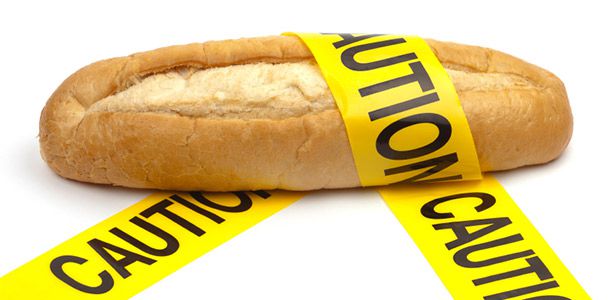In the first research of its kind in Australia, a study shows families could be paying up to 17% more for a gluten–free diet and for some single gluten-free items as much as 500% more.
The new study, published in the Dietitians Association of Australia’s journal Nutrition & Dietetics, compared the cost of a basket of gluten-free healthy foods, with a traditional healthy food basket, among four different family types.
UOW researchers Kelly Lambert and Caitlin Ficken found that following a healthy gluten free diet was most expensive for nuclear families, single parent families and single young males – and was even more difficult for these family types receiving welfare payments.
‘A gluten-free diet is unaffordable for the majority of family types we studied and for most families receiving welfare payments in Australia,’ said Ms Lambert, an Accredited Practising Dietitian.
According to Ms Lambert, the purchase price of a basket of gluten-free staple foods was up to 17% higher than the equivalent gluten-containing foods.
They also found a hefty mark-up for gluten-free staples, like bread and flour, compared with ‘regular’ foods.
‘In all cases, gluten-free flour, muesli, wraps and bread were more expensive. For example, gluten free items were between 316% (for wraps) and 574% (for flour) more expensive per 100g,’ said Ms Lambert.
She said coeliac disease, a gastrointestinal condition managed solely through a lifelong gluten-free diet, affects one in 100 Australians, and carefully following a gluten-free diet is crucial in preventing complications such as bowel cancer, osteoporosis and infertility.
‘For Australian families with a member affected by coeliac disease, the expense of a gluten-free diet is an unavoidable reality.
‘Sadly, the higher cost of the specialised foods they need to manage their condition often impacts on how well they can stick to the diet. Families on welfare with people who need a gluten-free diet are particularly vulnerable,’ said Ms Lambert.
Ms Lambert is calling on the government to consider a national subsidised medical foods program in Australia, similar to a model being used in England, so that people with coeliac disease can have better access to affordable gluten-free staple foods via prescription.
Ms Lambert said her research also provided ‘food for thought’ for those who have self-diagnosed a gluten sensitivity.
‘Over the past decade or so, avoiding gluten-containing foods has become a popular diet choice. Some people buy gluten-free foods because they think it will help them lose weight or because they think gluten-free foods are healthier, and others believe they are sensitive to gluten.
‘If you suspect your body can’t handle gluten, see your doctor first for a proper diagnosis. Without this, if you continue on a gluten-free diet, you not only risk missing out on important nutrients, but you’ll be up for a much steeper bill at the checkout, which for some people will mean less money for healthy foods like fruit and vegetables,’ said Ms Lambert.
| Regular item, cost ($) per 100g | Gluten-free item, cost ($) per 100g | |
| Wholemeal bread | 0.20 | 0.94 |
| Raisin bread | 0.57 | 1.00 |
| Wrap | 0.73 | 2.30 |
| Muesli | 0.32 | 1.31 |
| Pasta | 0.13 | 0.64 |
| Porridge | 0.15 | 1.05 |
| Soy sauce | 0.28 | 1.07 |
| Flour | 1.01 | 5.68 |
| Vegemite | 0.96 | 1.72 |
(Source: The University of Wollongong, Nutrition & Dietetics)











